Your Call?
Here is a tough challenge: which three of today’s ten featured images do you think are the strongest?
What’s Up?
Mornings had been quite slow recently until multiple IPT veteran Jim Miller showed up for 2 1/2 days of In-the-Field Instructional sessions. Both Wednesday and Thursday mornings were action packed. Though being eaten alive by no-see-ums, Jim and I did very well with Snowy Egret and Wood Stork silhouettes on Thursday afternoon. With light to no wind from the NW and the west, fishing Ospreys have been virtually nonexistent. David Pugsley joined Jim and me on Friday morning and the activity on the beach died. After a slow start, with had a fabulous time with the Wood Storks.
Today is Saturday 22 November 2025. David and wife Michelle and I will be headed early to the inlet. Whatever you opt to do, I hope that you too choose to have a wonderful and productive day. I head home on Monday 24 November and will be flying to Long Island for Thanksgiving to visit my two daughters and their families. It will be a short trip filled with family, food and football.
If an item — a Delkin flash card or reader, a Levered-clamp FlexShooter Pro, or a Wimberley lens plate or low foot — for example, that is available from B&H and/or Bedfords, is also available in the BAA Online Store, it would be great, and greatly appreciated, if you would opt to purchase from us. We will match or beat any price. Please remember also to use my B&H affiliate links or to earn 3% cash back at Bedford by using the BIRDSASART discount code at checkout for your major gear purchases. Doing either often earns you free guides and/or discounts. And always earns my great appreciation.
|
|
|
Fresh caught Alaskan seafood caught sustainably. Save $20.00 on your first order by clicking here. |
Wild Alaska Salmon and Seafood Company
Ever since my two daughters sent me a big box of salmon filets and sea scallops from Wild Alaska Salmon and Seafood Company for my birthday a few years ago, I have been ordering salmon and scallops from them. Now that Junior’s Fish Market in Lake Wales has closed, I will be depending on Wild Alaska every month. I always order the Sockeye filets and the Sea Scallops. The stuff comes frozen solid, is easy to prepare, and tastes pretty much as good as the fresh stuff would.
Save $20.00 on your first order by clicking here.
Eating wild caught seafood is about as healthy as you can go. The scallops are a real treat. When you sear them, be sure to cook them in the liquid that comes in the bag and be sure not to overcook them. I bake or broil the lightly seasoned salmon filets skin side down in olive or coconut oil.
Buy Direct from the Fisherman
Captain Tony has been fishing in Alaska since 1990. Wild Alaska is famous for their wild caught Sockeye and King Salmon! All of our other fish, including Ahi Tuna, Shrimp, Scallops, Cod, etc., are responsibly sourced, caught the right way and closely inspected by Capt. Tony to meet our high standards of quality and freshness. They catch and process all 5 species of wild pacific salmon, and source our other seafood products from high quality sustainable fisheries.
The stuff tastes great and is good for you. Internet orders to the continental United States are shipped from their fulfillment center in the Midwest allowing their seafood products to reach US customers in perfect condition. The flavor and texture of their salmon and other products remain fresher than fresh is because the stuff is frozen the same day it is caught.
Note
Nutritionally, if you are eating farm-raised salmon, you might as well be eating pop tarts. Sockeye salmon has the highest amount of Omega 3 of any fish with approximately 2.7 grams per 100-gram portion. Therefore, just one serving of Alaska salmon per week can help to lower cholesterol and the risk of heart disease. Scallops are widely considered one of the healthiest seafoods. Made up of 80% protein and sporting a low fat content, they can help you feel fuller longer and are rich in vitamins and minerals. They are also a great source of antioxidants. Dr. Morris 🙂
Gear Questions and Advice
Too many folks attending BAA IPTs and dozens of photographers whom I see in the field and on BirdPhotographer’s.Net, are — out of ignorance — using the wrong gear, especially when it comes to tripods and more especially, tripod heads. And the same is true in spades when ordering new camera bodies or lenses. My advice will often save you some serious money and may help you avoid making a seriously bad choice. Please know that I am always glad to answer your gear questions via e-mail. If you are desperate, you can try me on my cell at 863-221-2372. Please leave a message and shoot me a text if I do not pick up.
|
|
|
This image was created by yours truly on 13 November 2025 on a Sebastian Inlet Extended IPT. Seated in an inch of saltwater, I used the handheld Sony FE 400-800mm f/6.3-8 G OSS lens (Sony E) (at 800mm) and The Latest Greatest Sony Flagship Body, the a1 II Mirrorless Camera. The exposure was determined via Zebras with ISO on the Thumb Wheel. ISO 1000: 1/3200 sec. at f/8 (wide open) in Manual mode. RawDigger showed that the exposure was dead-solid perfect. AWB at 7:39:52am on a sunny morning. Wide/AF-C with Bird-Eye/Face Detection performed perfectly. Click on the image to enjoy the larger, inexplicably sharper high-res version. Image #1: Willet landing |
Uncharacteristically Fast Reflexes for Me
There was a group of terns and gulls on a sandbar at low tide. I spotted this Willet flying in to join them, raised my lens, fired a twelve-frame burst, and was thrilled with this one. I often miss chances like this because I am too slow to react. But not this time.
Note that with the bird perhaps two degrees off sun angle and both wings fully flared for braking, both underwings are evenly illuminated. Exactly as detailed in The Complete and Quintessential Guide to Photographing Birds in Flight (by Arthur Morris and Arash Hazeghi).
|
|
|
This image was created on 16 November 2025 on a Sebastian Inlet Extended IPT. Standing at full height I used the Lower center Tracking: Zone/AF-C with Bird-Eye/Face Detection performed perfectly. Click on the image to enjoy the larger, inexplicably sharper high-res version. Image #2: Cloud-scape sunrise with God-rays |
The Super-telephoto Zoom Lenses!
Nikon, inspired by the Sony 200-600, offers a Nikon NIKKOR Z 180-600mm f/5.6-6.3 VR lens. Canon released the Canon RF 100-500mm f/4.5-7.1 L IS USM lens quite early in the mirrorless game. The 1-5 changes length as you zoom in an out, the zoom mechanism is stiff, and handling is clunky. Then Canon introduced the Canon RF 200-800mm f/6.3-9 IS USM lens in 2025; because the Canon 2-8 changes length as you zoom in an out and because the zoom mechanism is stiff and clunky and because the construction is not top flight, I am not a fan even though it is, like its predecessor — the 100- 500, a very sharp lens. Olympus has the OM SYSTEM M. Zuiko 150-400mm f/4.5 TC 1.25 IS PRO lens. Sony offers its devotees both the Sony FE 200-600mm f/5.6-6.3 G OSS lens and the Sony FE 400-800mm f/6.3-8 G OSS lens (Sony E). All of the lenses in this class however, are incredibly versatile whether used as one’s primary big lens or as an accessory lens for those using either a 600mm f/4 or a 400mm f.2.8.
For the past week, my Sony FE 600mm f/4 GM OSS lens has been taking a break in the garage at my AirBnB while I have been using my 400-800 most of the time and the 200-600 some of the time.
|
|
|
This image was created on 18 November 2025 on a Sebastian Inlet Extended IPT. Standing at full height I used the a Center Tracking: Zone/AF-C with Bird-Eye/Face Detection performed perfectly. Click on the image to enjoy the larger, inexplicably sharper high-res version. Image #3: ocean/beach/dune-scape pan blur |
Landscapes and Layers
Incorporating multiple layers in your landscape motifs can be a huge plus as the sky/dune/beach/ocean layers are in this carefully designed pan blur.
|
|
|
This image was created by yours truly on 19 November 2025 at Sebastian Inlet State Park. Standing at full height, I used the handheld Sony FE 200-600mm f/5.6-6.3 G OSS lens (at 600mm) and the Latest Greatest Flagship Body, the Sony a1 II Mirrorless Camera. The exposure was determined by Zebras with Exposure Compensation (EC) on the thumb wheel. Multi Metering +1.3 stops: AUTO ISO set ISO 2000: 1/15 second at f/6.3 (wide open) in Shutter Priority mode. RawDigger showed that the exposure was perfect. AWB at 6:14:08am 22 minutes before sunrise. Wide/AF-C with Bird-Eye/Face Detection performed perfectly. Click on the image to enjoy a larger, inexplicably sharper high-res version. Image #4: Brown Pelican pre-dawn blur in orange sky |
Shutter Priority with AUTO ISO and Exposure Compensation on a Convenient Wheel or Dial
Folks who believe that “real” photographers work in Manual mode 100% of the time are sadly mistaken. In pre-dawn and early sunrise situations working in Shutter Priority is easier, faster, and more efficient. Period. Full stop. The many photographers who arrive at Sebastian Inlet fifteen minutes after sunrise often miss nearly an hour of fabulous bird photography opportunities. And the many photographers who come only to photograph Ospreys (no matter the wind direction and sky conditions) are almost always missing a host of great bird photography opportunities. Period. Full stop. Ignorance can be bliss.
|
|
|
This image was created by multiple IPT veteran Jim Miller on 19 November 2025 at Sebastian Inlet State Park. Standing at full height, he used the a Center Tracking: Zone/AF-C with Bird-Eye/Face Detection performed perfectly. Click on the image to enjoy a larger, inexplicably sharper high-res version. Image #5: South Jetty pan blur |
Meeting the Client’s Needs
While Jim Miller loves to photograph birds, he is far more of a generalist than I am. So I do my best to point out situations that might be of interest to him. While we were creating pan blurs using Shutter Priority, Jim thought to include the South Jetty in his image design. With stunning results. I used several masks during the raw conversion in ACR to bring this properly exposed to the right image to life.
|
|
|
This image was created by yours truly on 19 November 2025 at Sebastian Inlet State Park. Standing at full height, I used the handheld Sony FE 200-600mm f/5.6-6.3 G OSS lens, the Sony FE 1.4x Teleconverter (at 840mm), and the Latest Greatest Flagship Body, the Sony a1 II Mirrorless Camera. The exposure was determined by Zebras with Exposure Compensation (EC) on the thumb wheel. Multi Metering at zero; AUTO ISO set ISO 400: 1/4000 second at f/9 (wide open) in Shutter Priority mode. RawDigger showed that the exposure was perfect. AWB at 8:28:00 on a clear, sunny morning. Wide/AF-C with Bird-Eye/Face Detection performed perfectly. Click on the image to enjoy a larger, inexplicably sharper high-res version. Image #6: Wood Stork on railing strongly backlit |
Think Backlight When Working in Wind-Against-Sun Conditions
Rather than folding your tent and going home when the wind is blowing directly against the sun, look for situations where you can photograph birds against a portion of very-bright sky. Remember, however, that it is vitally important (in almost all cases) not to include the sun in the frame.
|
|
|
This image was created by yours truly on 19 November 2025 at Sebastian Inlet State Park. Seated in the front seat of my SUV I used the BLUBB-supported Sony FE 400-800mm f/6.3-8 G OSS lens (Sony E), the Sony FE 1.4x Teleconverter (at 1120mm), and The Latest Greatest Sony Flagship Body, the a1 II Mirrorless Camera. The exposure was determined by Zebras with Exposure Compensation (EC) on the thumb wheel. Multi Metering =0.3 stops: AUTO ISO set ISO 1600: 1/2500 second at f/11 (wide open) in Shutter Priority mode. RawDigger showed that the exposure was dead-solid perfect. AWB at 9:07:20am on a totally sunny morning. Wide/AF-C with Bird Eye/Face Detection enabled performed adequately. Click on the image to see a larger, sharper high resolution version Image #7: Belted Kingfisher male on perch |
The Sony Super-telephoto Zooms and the FE 1.4X Teleconverter
Both the 200-600 and the 400-800 are amazing sharp with the 1.4X TC. In full sun, even flight photography is more than do-able. This makes these lenses even more valuable and versatile. The 200-600 becomes a 280-840mm lens (f/9 at the long end) while the 400-800 turns into a 560 to 1120mm zoom. As you can see in this and the previous image, both rigs are capable of producing amazingly sharp photographs.
|
|
|
This image was created by multiple IPT veteran Jim Miller on 19 November 2025 at Sebastian Inlet State Park. Standing at full height, he used the a Wide/AF-C with Bird-Eye/Face Detection performed perfectly. Click on the image to enjoy a larger, inexplicably sharper high-res version. Image #8: Snowy Egret hunting in pink, pre-dawn reflections |
From Nothing to Something in Two Seconds Flat
When we got down onto the beach a single Snowy Egret was standing on clean sand atop a steep berm. Just one the sun peeked over the clouds on the eastern horizon, a large wave rolled in and created a fairly wide pool of shallow water. With the sun behind us, the pool reflected the pink sky to the northwest. We were both excited. During our image review session on Thursday it turned out that Jim’s best one was better than my best one! It pays to listen to your instructor!
|
|
|
This image was created by multiple IPT veteran Jim Miller on 19 November 2025 at Sebastian Inlet State Park. Standing at full height, he used the handheld Sony FE 200-600mm f/5.6-6.3 G OSS lens (at 600mm) and the Sony a-1 (now replaced by the Latest Greatest Flagship Body, the Sony a1 II Mirrorless Camera). The exposure was determined via Zebras with ISO on the Thumb Wheel. ISO 400: 1/1600 sec. at f/8 (stopped down 2/3-stops) in Manual mode. RawDigger showed that the exposure was perfect. AWB at 7:47:22am. Wide/AF-C with Bird-Eye/Face Detection performed perfectly. Click on the image to enjoy a larger, inexplicably sharper high-res version. Image #9: Great Egret head and neck portrait |
Adapting to a Situation
We started off photographing this tame, handsome young bird from my SUV. Depending on the bird’s posture, we worked with either a pure blue background, the sunlit water of the inlet, or with a blue at the bottom/green at the top background, the green from the vegetation on the far shore of the inlet.
|
|
|
This image was created by multiple IPT veteran David Pugsley on 19 November 2025 at Sebastian Inlet State Park. Kneeling in a full squat in shallow water, he used the Robus RC-5570 Vantage Series 3 Carbon Fiber Tripod/Levered-Clamp FlexShooter Pro-mounted Sony FE 600mm f/4 GM OSS lens with the Sony FE 1.4x Teleconverter and the Sony a-1 (now replaced by the Latest Greatest Sony Flagship Body, the a1 II Mirrorless Camera). Exposure determined via Zebras with ISO on the Thumb Wheel. ISO 400: 1/1000 sec. at f/5.6 (wide open) in Manual mode. RawDigger showed that the exposure was perfect. AWB at 88:49:23am on a sunny morning. Wide/AF-C with Bird Eye/Face Detection enabled performed perfectly. Click on the image to enjoy the larger, inexplicably sharper high-res version. Image #10: Wood Stork juvenile head and neck portrait |
Score One for the Young, the Strong, and the 600mm f/4 on a Tripod at 840mm
As the nine images above show, there are many benefits to handholding one of the many versatile super-telephoto zoom lenses. But there will always be a place for the incredible token provided by the 600mm f/4 lenses with and without TCs.
Kudos to David for getting low in order to produce the beautifully layered background in the image above. I especially love the touch of green in the water in the lower right portion of the photo as it helps to move the viewer’s eye around the frame.
Typos
With all blog posts, feel free to e-mail or to leave a comment regarding any typos or errors.



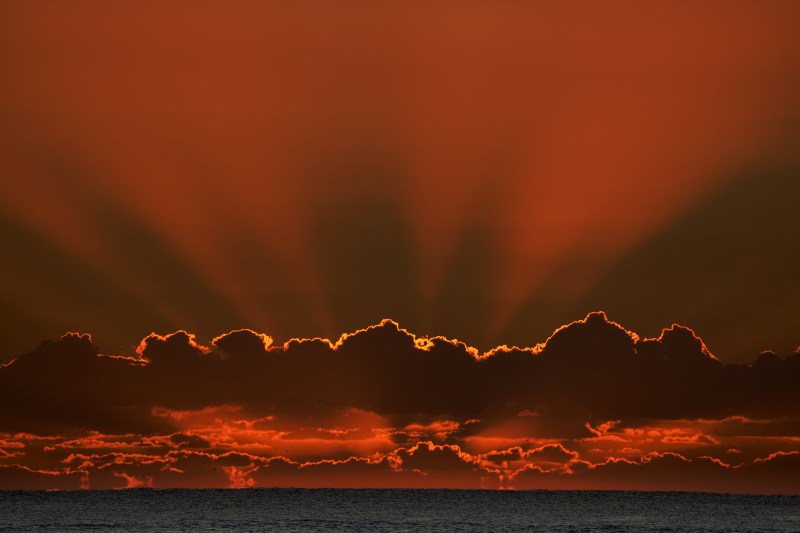
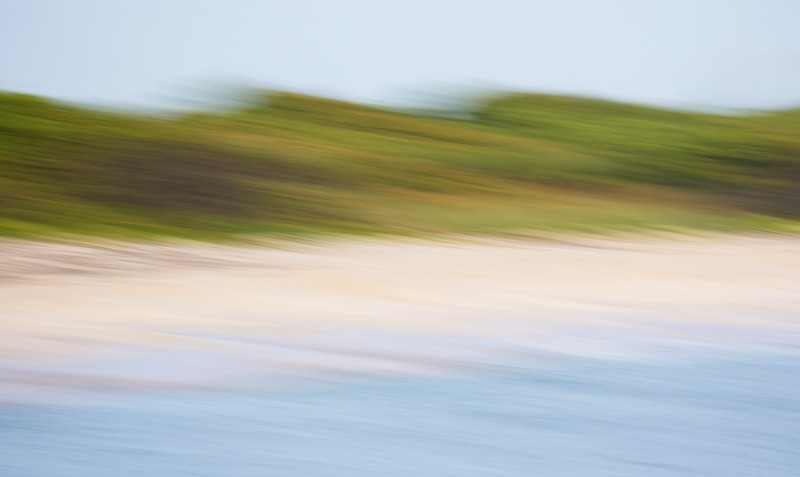
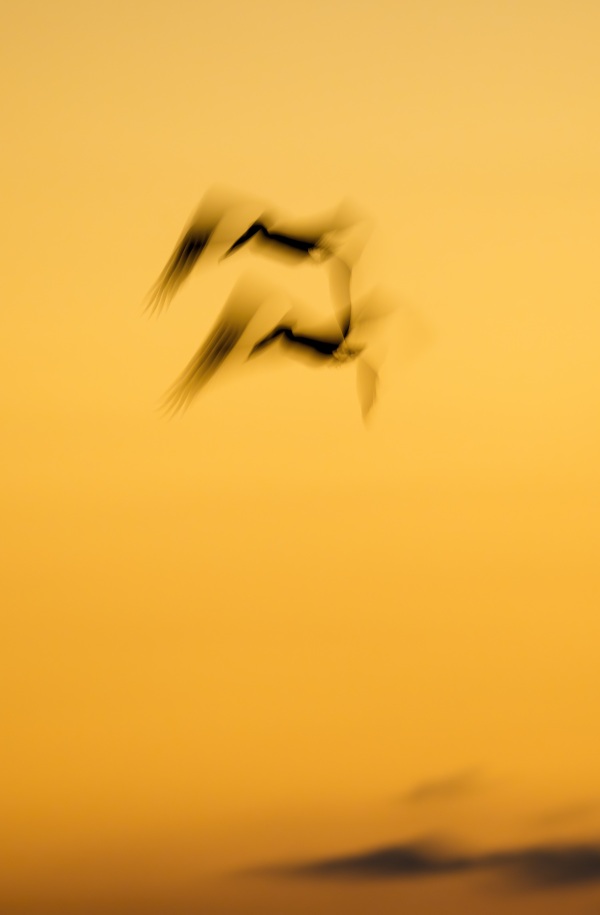
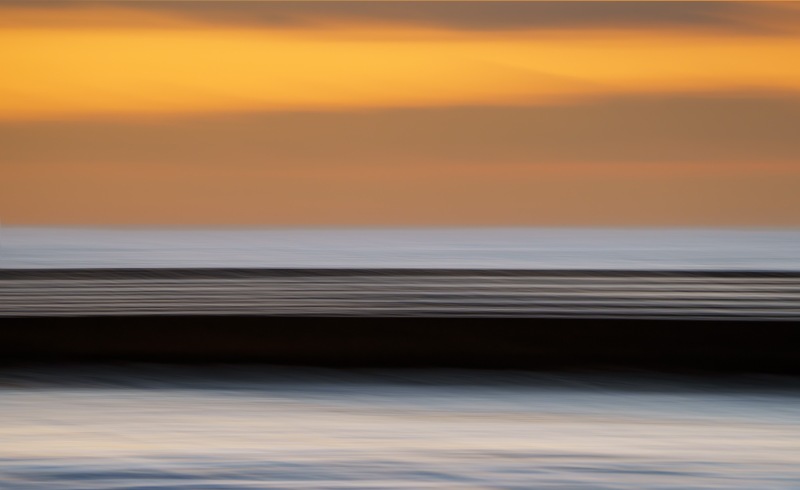



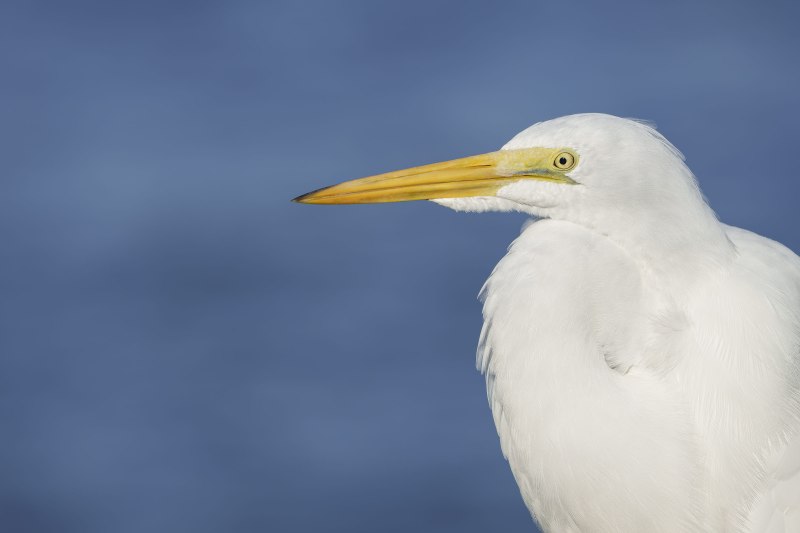
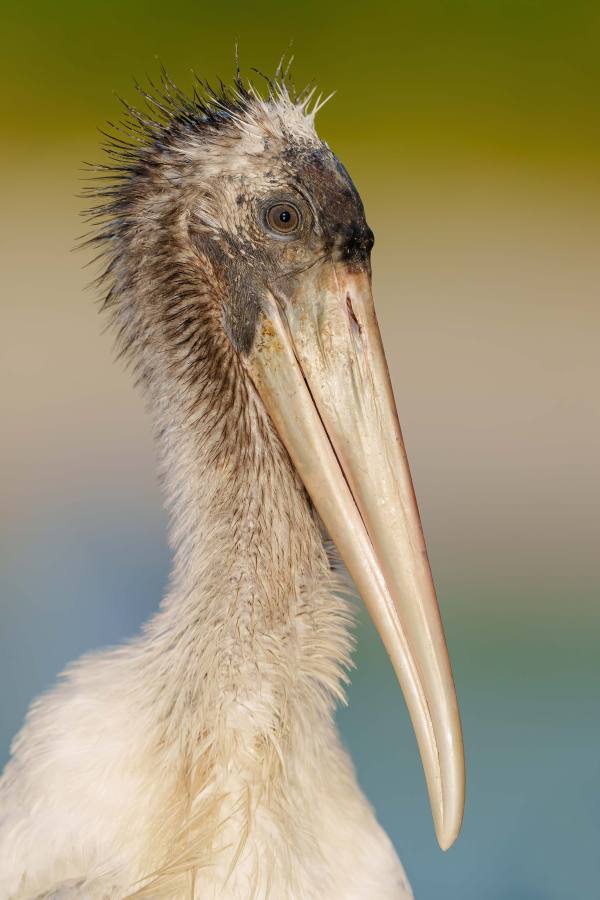









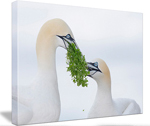
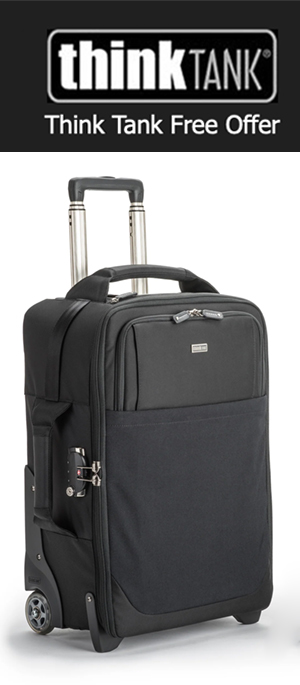


Leave a Reply